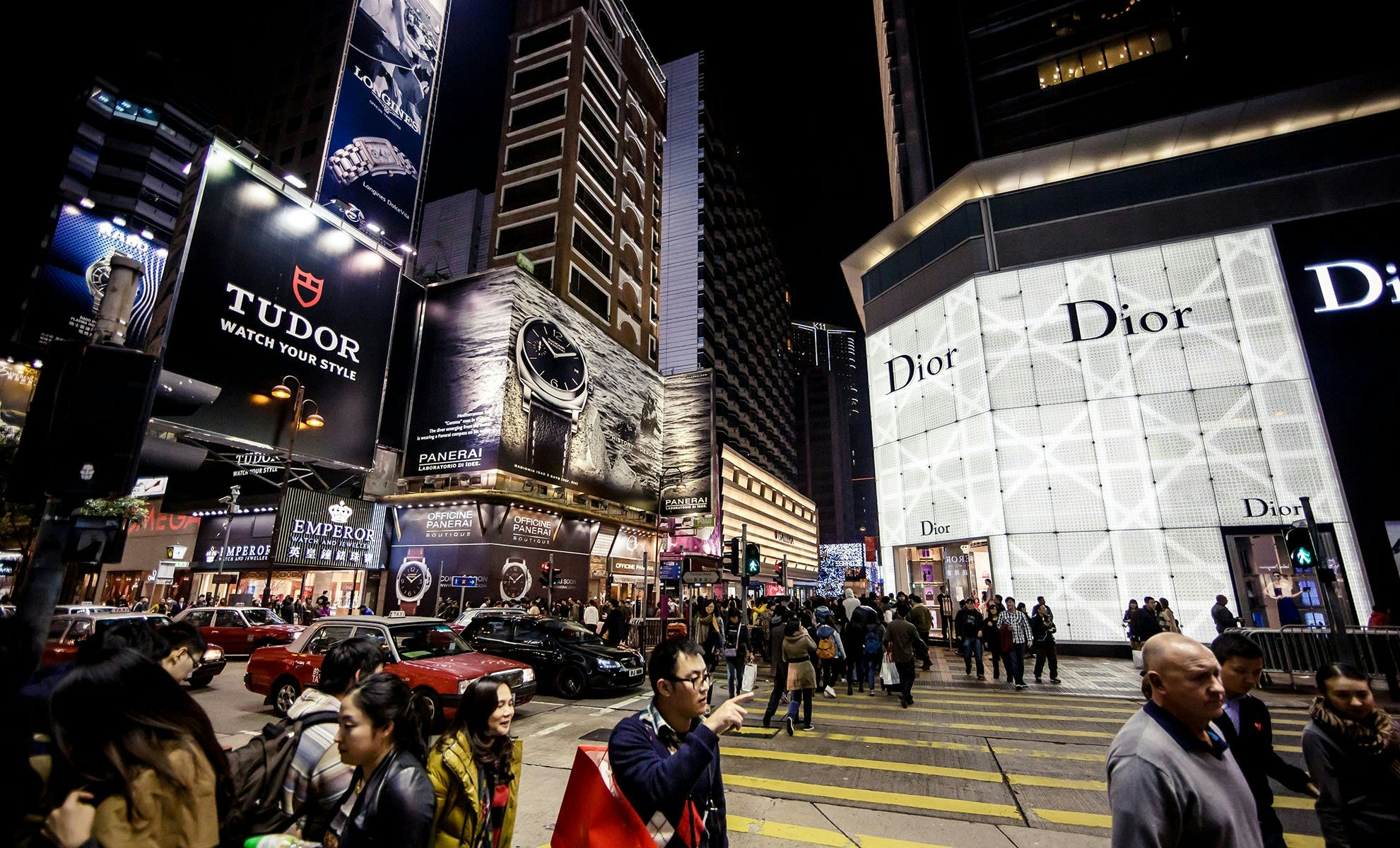Initial reports from Golden Week in Hong Kong point to a stronger Chinese tourism performance than last year, but Chinese holidaymakers are spending less and staying shorter amounts of time than in previous years.
According to statistics quoted by the South China Morning Post, Chinese tourism to Hong Kong saw a boost of 3.6 percent the first three days of China’s Golden Week holiday compared to the same period last year. This represents a mildly positive trend break from 2015, which was widely quoted as the “worst ever Golden Week” by Hong Kong tourism stakeholders, and was the first time since the 2008-2009 global financial crisis that Chinese tourism to Hong Kong shrank. At the time, the slump in Chinese visitors was to blame for the underwhelming Golden Week retail performance which saw many luxury stores void of the usual masse of Chinese tourists lining up outside the storefronts.
Hong Kong is no longer the engine behind China's international travel growth. (Data from Hong Kong Tourism Bureau and Goldman Sachs)
However, this year is setting the stage for a more in-depth discussion about how Hong Kong can cash in on Chinese tourists, with modest growth in Chinese visitors, but a continued drop in retail spending among them. Chow Sang Sang, a major Hong Kong jeweler, corroborated the trend shift with a 15 percent drop in sales compared to the same weekend last year—with the total number of customers largely unchanged. This is further evidence of the changing demographics of Chinese global travelers as global travel has become more accessible to China’s growing middle class. Meanwhile, big spenders are increasingly seeking out destinations and shopping experienced that are perceived as more exotic or unique than China’s Special Administrative Regions (SARs). Regional competitors such as Japan and South Korea are showing resilient growth, and long-haul destinations are more popular than ever with record numbers of Chinese tourists in Australia, New Zealand, and the United States.
Hong Kong’s role as many Chinese travelers’ first “overseas” destination is still important, but as international travel is becoming more of a middle-class product than a luxury product for China’s urban consumers, being the destination of choice for first-time travelers is not as profitable as it used to be. Nevertheless, Hong Kong remains the foremost destination for Chinese travelers with 45.8 million arrivals in 2015—a figure that other destinations can only dream of, and representing more than a third of all Chinese overseas visits. At the same time, the Hong Kong Tourism Board reports that average spending is down from HK$9,000 (US$1,160) in 2014 to HK$7,105 (US$916) in the first half of 2016. To offset the lower average spending of Chinese visitors, tourism to Hong Kong would have to grow in the double digits—but the capacity isn’t there, nor is the patience for overcrowding among the local population. Crucially, dampened interest in travel to Hong Kong among Chinese travelers makes reliance on future visitor growth an unlikely prospect for Hong Kong’s tourism stakeholders.
Chinese tourists have become irreplaceable for Hong Kong's tourism industry. (Data from Hong Kong Tourism Bureau)
Further, Hong Kong is struggling with shorter periods of stay among its Chinese visitors who are increasingly treating the SAR as a few-day destination. The average length of stay among all visitors was 3.3 nights in 2015 according to the Hong Kong Tourism Bureau, and the number is expected to decrease even further in 2016.
All of the above makes for a bittersweet Golden Week in Hong Kong. Even though an improved arrival figure indicates that tourism to Hong Kong isn’t crashing, lower average spending among its visitors is making tourism a less profitable venture than it used to be.
The good news for the rest of the world is that Hong Kong, which used to gobble up a lion's share of the Chinese outbound tourism market, is now representing a smaller share of overall tourism as Chinese tourists seek out other foreign destinations for their travels. Similarly, fewer big-spending Chinese consumers in Hong Kong means more big spenders elsewhere. What might be a small loss for Hong Kong could be a big win for its competition.
